
Selling products online today is complex. There are thousands of brands selling thousands of products both in-store and online.
So, how will your products stand out from the competition and capture the attention of your customers?
It's through merchandising.
In this post, we will learn more about merchandising and its evolution in today's digital world. We will learn how to leverage eCommerce merchandising to boost your sales and the best eCommerce merchandising tools you can use to grow a powerful merchandising strategy.
What Is Merchandising?
Merchandising is the process of promoting goods or services at retail outlets for influencing customers and thus, boosting sales. It includes organizing and displaying products to maximize their visual appeal and entice customers to buy.
Besides displaying products aesthetically, merchandising involves modifying the shelf layout, using promotional signage, setting competitive pricing, giving away free samples, organizing live product demos, and more to lure in customers and sell your products.
Merchandising is important because it enhances the overall shopping experience for customers with strategic product placement, targeted promotions, and appealing product displays. It helps you cater to diverse customer preferences and meet their evolving demands. This ensures enhanced customer satisfaction, and increased sales and revenue.
Today, merchandising is no longer restricted to traditional brick-and-mortar stores. Online eCommerce stores are leveraging merchandising to publicize and promote their products. That being said, let us learn more about eCommerce merchandising.
What Is Ecommerce Merchandising?
ECommerce merchandising is the process of displaying your products strategically on your online store to drive sales and boost revenue. It makes it easy for your customers or website visitors to find the products they are looking for. Further, it also helps them discover new products they may not have considered before.
Ecommerce merchandising optimizes how your products are displayed online using visual display, product categorization, product placement, personalized recommendations, and promotions. The goal of eCommerce merchandising is to connect the customers to the right products. It increases product discoverability and simplifies the buying process for your customers.
Why Is Ecommerce Merchandising Important in Ecommerce?
Ecommerce merchandising plays a crucial role in shaping online shopping experiences. It enhances the visibility and appeal of your products thereby improving product discoverability. With the help of strategic product placements and attractive visuals, you can capture the attention of your website visitors and customers and encourage them to explore your products. This certainly influences your customer behavior and motivates them to make additional purchases with your brand.
For example, promotional coupons, discounts, and limited-time deals when highlighted using various merchandising tactics can create a sense of urgency among customers to place their orders.
Ecommerce merchandising also helps you build a strong and consistent brand online. With the help of curated product collections, seamless UI and UX, storytelling, and more, you can foster a memorable identity about your brand in the minds of your customers. This helps you build a long-lasting connection with your audience and boost brand loyalty.
You can also leverage eCommerce merchandising to stay abreast with the latest trends and implement them in your online business to woo your customers. It helps you build a compelling shopping environment that benefits from seasonality, thematic product displays, ever-evolving customer preferences, and more. It amplifies your overall brand experience and drives business success.
How Do You Select the Best Merchandising App for Your Site?
There is no standard set of steps you must follow when choosing the right merchandising app for your eCommerce business. It completely depends on your business goals.
Do you want to offer seamless search experiences to customers? Do you want to build a personalized product collection for them? Do you want to target the mobile shoppers? You can opt for desired tools depending on what you are optimizing for.
Once you have set your goals, it is time to explore various tools to achieve those goals. Remember the software you choose must be user-friendly, customizable, and offer excellent features. Check if the software integrates seamlessly with your existing systems.
Read the reviews of these tools online and explore their trial versions if possible. This will help you understand if the software would help you with your merchandising efforts.
Top 7 Best Merchandising Apps in 2024
Ecommerce merchandising is not just about strategic product placement. There are various other aspects, such as visual merchandising, product promotions, new product releases, and so on that contribute to efficient ecommerce merchandising. Hence, relying on a single tool to take care of your eCommerce merchandising needs is simply not enough. You must leverage a host of other tools to build an ideal eCommerce merchandising solution for your business.
Let us explore some of these tools and learn how they can contribute to building an excellent eCommerce merchandising strategy.
#1 - Sparq - For Next-level Product Search
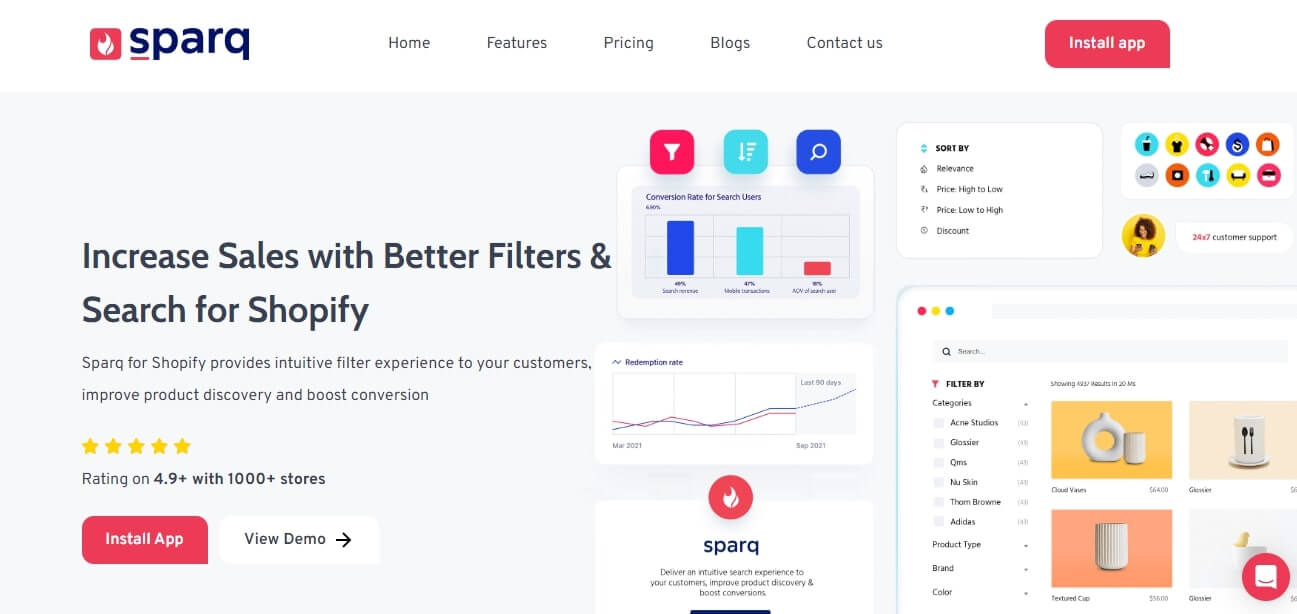
Leverage Sparq Product Search to boost your searchandising strategy with its advanced AI tools designed especially for product discovery. Did you know about 69% of customers head over straight to the search box when they visit an eCommerce store? But, 80% of these customers admitted to leaving the website because the search experience did not meet their expectations. Hence, investing in an advanced search engine that delivers the right content at the right time is a must.
Sparq Product Search offers you an intuitive product search and filter tool that improves the overall search experience of your eCommerce store. It helps them find your products more quickly and in fewer clicks.
Key Features -
- Advanced search engine powered by AI and NLP algorithms
- Instant search-as-you-type option to streamline the search for customers
- Unlimited filters using meta-fields, tags, discounts, locations, and more
- Intelligent insights into customer behavior, search performance, and other analytics
Pros -
- Can be customized to match your website theme
- Allows creation of custom filters for your unique store requirements
- Offers auto-correct for spelling mistakes, synonyms, and other suggestions
- Can be integrated seamlessly with other eCommerce apps
- Offers 14-day free trial
Pricing -
- Starts from $19 per month
#2 - Hotjar - For Heatmaps and Behavioral Analytics
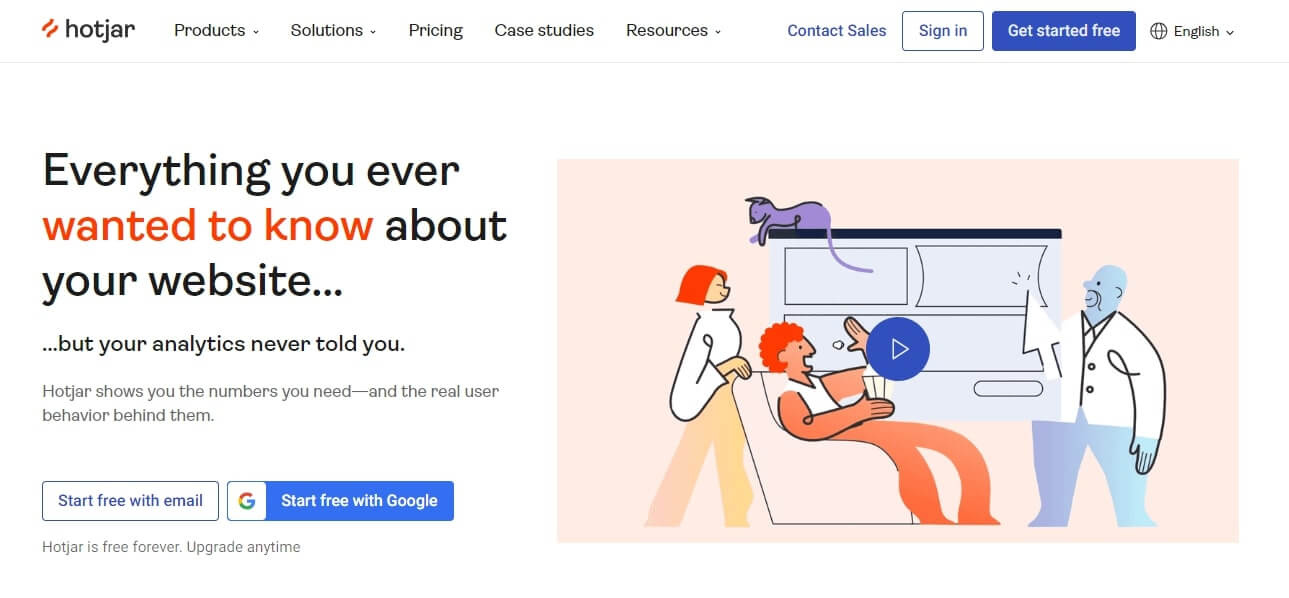
Hotjar is the next tool that gives you valuable insights into what your customers are doing on your website. It helps you visualize the clicks, scrolls, and taps to understand your customer behavior. It also helps you identify the areas/pages on your website where your customers spend most of their time. These insights can be of great help for eCommerce merchandising. You will be able to revamp your product pages, navigation bars, search box placement, and more based on how they interact with your online store.
Key Features -
- Generates detailed heatmaps showcasing customer behavior on your website
- Allows you to check customer interactions in real-time
- Capture customer feedback to spot areas of improvement
- Utilize AI-powered surveys to gauge customer sentiment
Pros -
- Offers a deep analysis of customer behavior on your website
- Provides excellent insights to improve customer experience
- Supports polls, feedback forms, and surveys
- Can be integrated with your website without any hassles
Cons -
- Does not provide in-depth form analysis
- Some features are not compatible with mobile devices
Pricing -
- The freemium version is available
- Paid plans start from $39 per month
#3 - Google PageSpeed Insights - For Measuring Website Performance
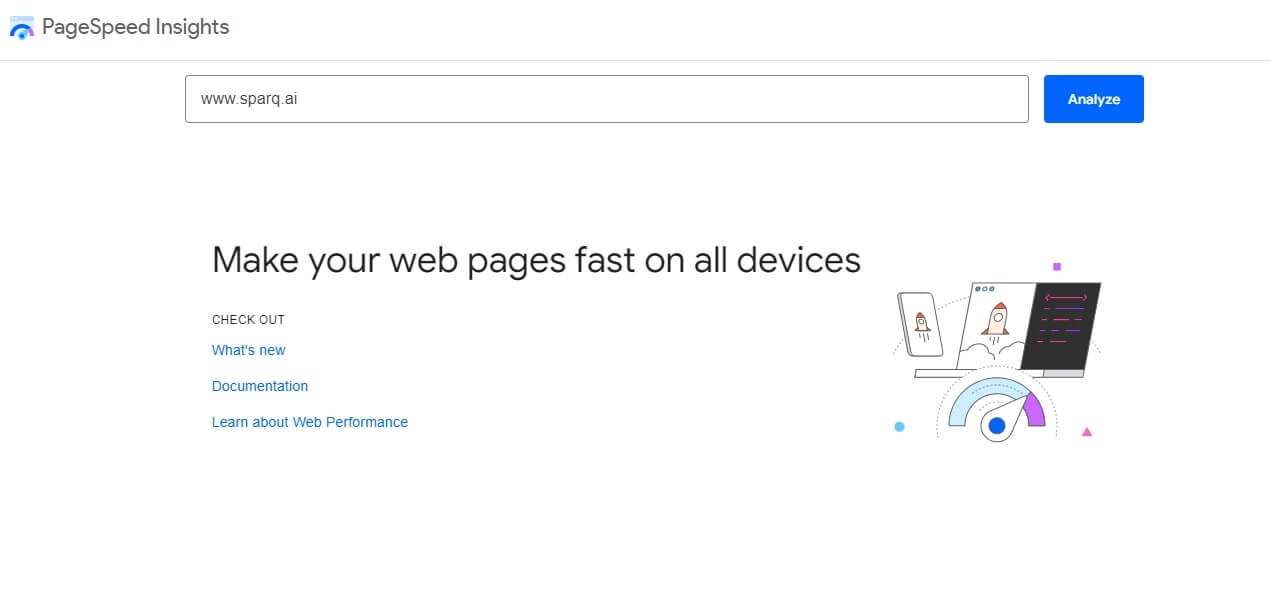
Google PageSpeed Insights is an outstanding web performance analysis tool developed by Google. It gives insights into how your website page performs across different devices, especially mobile devices. This tool does this by analyzing the web page content and offering suggestions to enhance its speed and user experience. The main focus is on optimizing the loading time of the web pages to ensure user satisfaction.
Key Features -
- Analyzes and monitors website speed for better performance
- Offers suggestions about how the page performance can be improved
Pros -
- Helps address performance issues for mobile and desktop versions separately
- Builds user-friendly web pages ensuring their optimal performance at all times
Cons -
- Focuses majorly on technical aspects and hence, may not align with modern design choices
Pricing -
- It is free to use
#4 - Mason - For Hyper-Personalized Product Recommendations

Mason offers an AI shopping copilot that delivers hyper-personalized shopping suggestions and dynamic offers to customers. Besides product recommendations, Mason provides customers with generative engagement apps like interactive quizzes, product finder wizards, and more to encourage more sales.
Key Features -
- Shares personalized product recommendations to customers based on their buying behavior
- Offers excellent product display tools - new arrivals, bestseller products, product badges, and more to support online merchandising
- Contains a library of online merchandising templates that can be customized to your store requirements
Pros -
- Delivers hyper-personalized experiences to customers
- Offers real-time sale nudges to motivate customers to make their purchases
- Supports marketing tactics like upselling, cross-selling, and product bundles to drive more sales
- Integrates seamlessly with other marketing tools
Cons -
- The freemium version is not available
- Expensive
Pricing -
- Starts from $249 per month
#5 - Shutter Stream 360 - For Product Photography
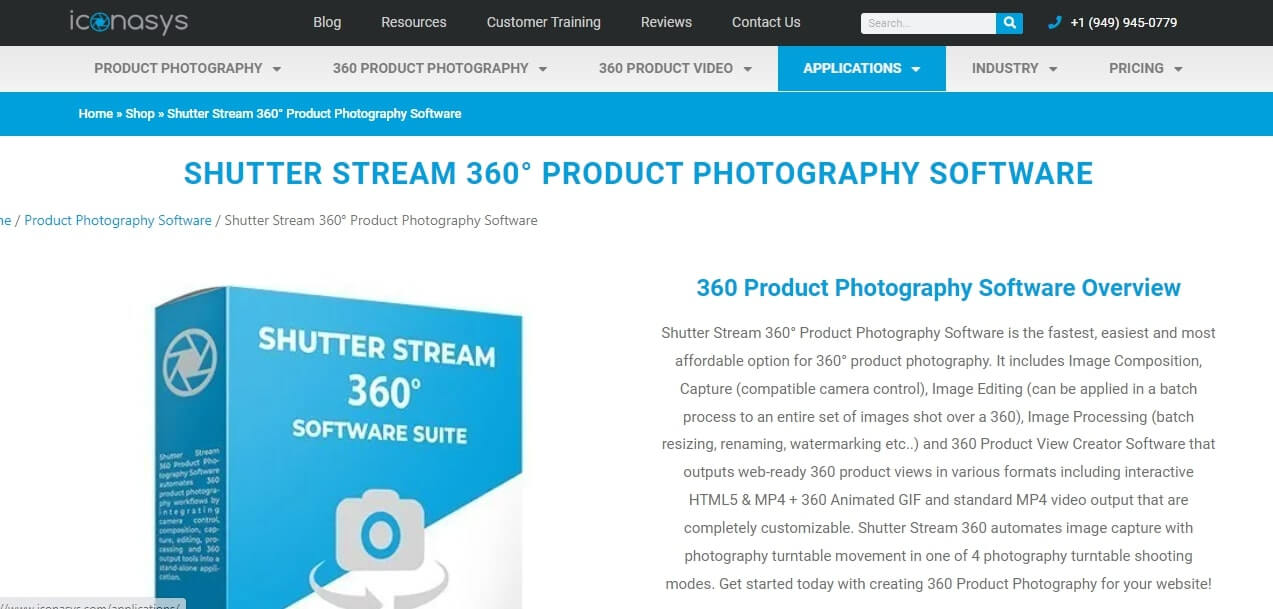
Shutter Stream 360 is another tool that can help you take your eCommerce merchandising to the next level. Shutter Stream 360 is an outstanding tool for eCommerce product photography. It is designed to create high-quality product images that can be rotated at 360 degrees to provide a complete view of products to the customers.
Key Features -
- Offers excellent image composition, editing, and processing tools
Pros -
- Generates high-quality, appealing product images that will certainly attract customers
Cons -
- Expensive
**Pricing - **
- Starts from $649
#6 - Gempages - For Building Additional Landing Pages
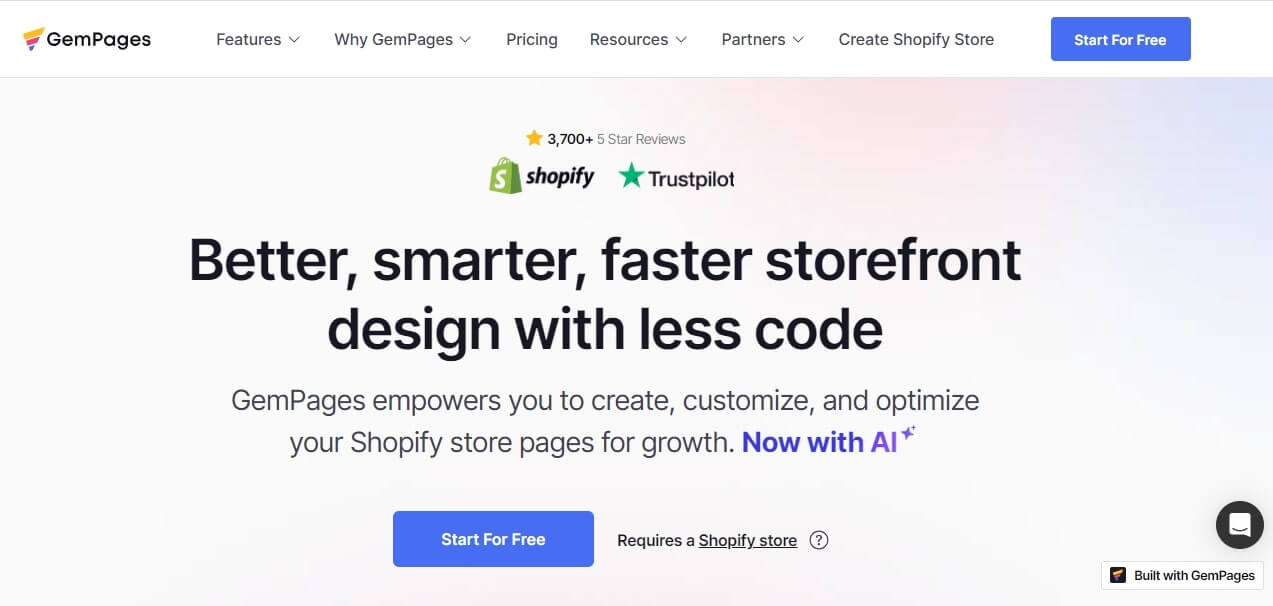
GemPages is an intuitive drag-and-drop page builder that helps you build additional web pages for your Shopify store. It offers an extensive library of stylish page templates that you can directly import and customize to create attractive landing pages for online merchandising.
Key Features -
- Offers a powerful visual editor for creating high-converting landing pages
- Configure a publishing schedule to have your web pages published at a certain time
- Provides a vast toolkit of elements to design web pages
- Offers an image-to-layout builder that creates layouts in a few clicks
Pros -
- Gain access to the latest web page designs with a template library
- Use an AI-powered layout generator to build faster web pages
- Customize the pages to suit your eCommerce branding
- Offers mobile-friendly design
Cons -
- Compatible only with Shopify
Pricing -
- The freemium version is available
- Paid plans start from $29 per month
#7 - Klaviyo - For Content Display and Push Notification Automation

Klaviyo is a marketing automation tool that you can leverage for showcasing personalized content to your customers and nurturing strong relationships with them. It helps you with eCommerce merchandising by automating the content display process and serving tailored content to your customers.
Key Features -
- Personalize content based on customer behavior and their preferences
- Generate unique coupon codes for individual customers and display them anywhere in the store
- Deliver desired content at any time with customizable automated workflows
- Use pre-built templates to deliver amazing customer experiences
- Encourage customers to take action with the help of regular reminders, dynamic images, and other notifications
Pros -
- Segment customers into different categories for targeted messaging
- Offers predictive analytics that leverages customer data to give you the best behavioral insights for effective marketing
- Integrates with most eCommerce platforms
Cons -
- More focused on email marketing automation
Pricing -
- The freemium version is available
- Paid plans start from $20 per month
Online Merchandising Strategies for Success
Crafting an Effective Merchandising Strategy
Here are some amazing eCommerce merchandising strategies you can follow to increase sales.
- Design an attractive homepage. Let it tell your brand story - share what your brand stands for, highlight your top-selling products, show off your customer reviews, and more. Boast over your key selling points such as free shipping, extended returns period, limited-time deals, and more. Stick to a simple yet attractive design and user-friendly navigation.
- Integrate a sophisticated search function with your website to allow customers to find exactly what they are looking for. Choose a search engine that offers autocomplete, product suggestions, or related search terms to simplify the process for your customers.
- Install and configure a filter panel that allows customers to narrow down their product search using various criteria like pricing, color, size, brand, and more.
- Group similar products into collections thereby making it easy for customers to discover them. You can also list products that complement each other together to encourage customers to buy product bundles.
- Offer personalized product recommendations. Based on the customer's buying history and wishlist items, share personal recommendations with them. Make sure the product page contains all details about the product such as a description, color, material, dimensions, size guide, and other details.
- Use product images, videos, and customer reviews to provide potential customers the opportunity to know more about your products. Offering them a 360-degree view of the product will give them a good up-close view of the product.
- Encourage impulse buys by offering special discounts, limited-time decreased product pricing, or something similar. Checkouts are usually the best opportunities for quick cross-selling.
- Optimize your website for mobile devices. Over 91% of customers make their online purchases using their smartphones.
Highlighting New and Upcoming Merchandising Trends
Here are a few eCommerce merchandising trends that are expected to grow this year.
- AI-powered personalization for customizing shopping experiences will continue to see a rise.
- Virtual try-ons and interactive AR product visualization will boost shopping experiences.
- Voice commerce i.e. integrating voice-activated commands and shopping through virtual assistants will garner more attention.
- The introduction of dynamic pricing strategies to optimize product pricing based on the demand and market conditions will transform eCommerce sales and revenue.
Merchandise Examples: Learning from the Best
Now let us have a look at how leading brands are leveraging eCommerce merchandising to maximize their sales.
#1. ASOS
ASOS, an online fashion and cosmetic retailer, uses a filter panel on the top of the page to help their customers narrow down their options from a big list of products using multiple criteria. Customers no longer have to scroll through multiple pages to find the product they wish to buy.
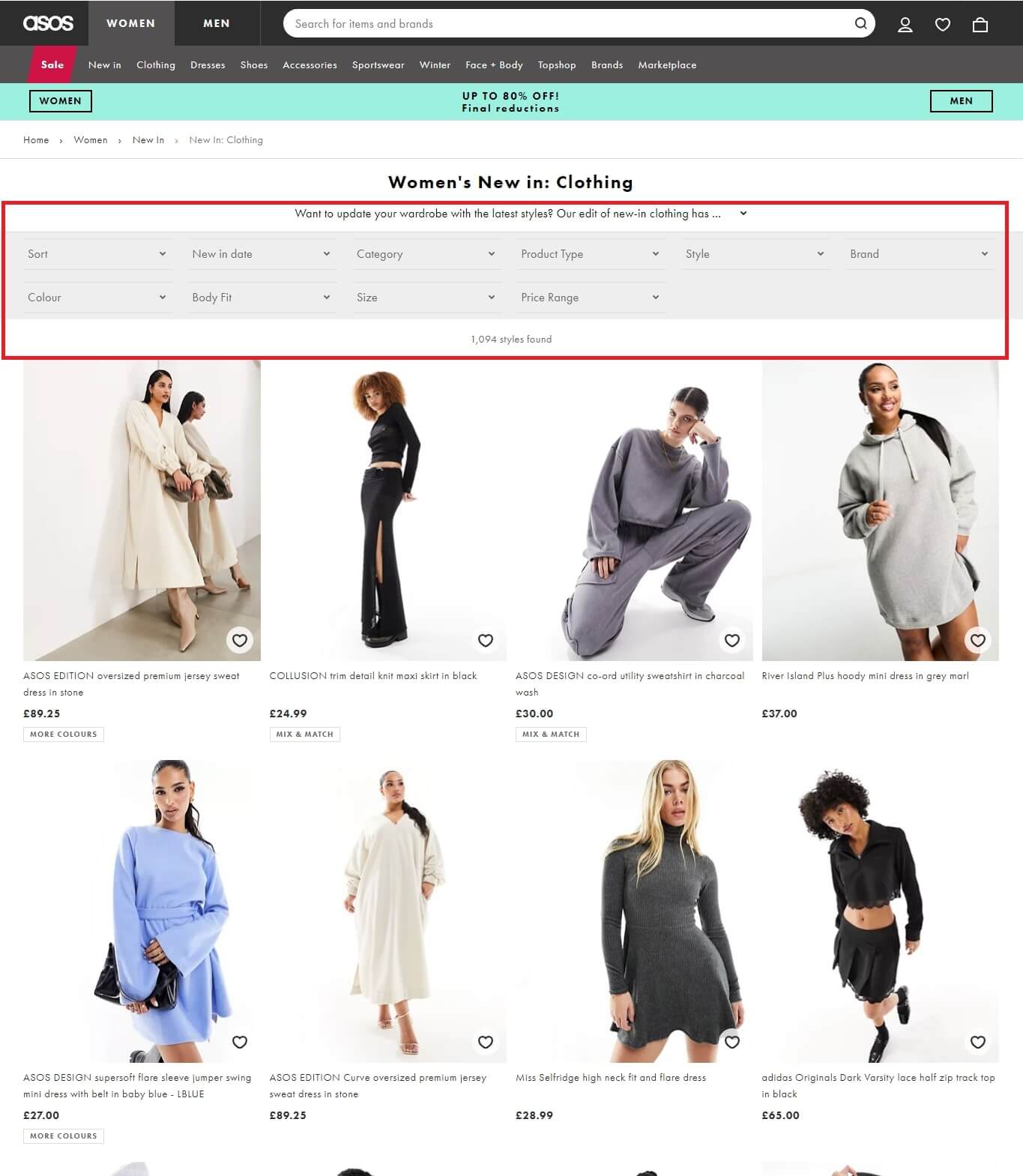
#2. Amazon
leverages product recommendations to boost its sales. They employ the best product recommendation engine that analyzes various factors such as past purchases, customer browsing history, ratings, and more to suggest products to their customers.
You must have often seen sections like 'Keep shopping for', 'Deals based on your recent history', 'Buy again', 'People also buy', and more on your Amazon account.


Similarly, Amazon displays product reviews on each of the products as they are a strong form of social proof.
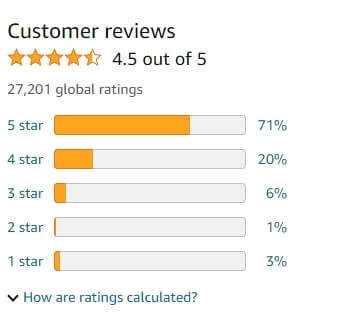

Conclusion
ECommerce merchandising is an excellent strategy to enhance product discovery and encourage customers to shop from you. All you need is an effective merchandising strategy and the best eCommerce merchandising tools to get started.
The tools we shared in this post help you simplify various aspects of eCommerce merchandising, such as sharing product recommendations, implementing an excellent product search engine, optimizing websites for mobile devices, and more. You can leverage these tools to improve your customer journey and boost sales.
Frequently Asked Questions
What is product merchandising?
Product merchandising is the process that eCommerce brands follow for displaying, promoting, and selling their products to customers. It includes a set of strategies for presenting and marketing your products in a way that attracts desired attention from potential buyers and converts them into sales.
What is fashion merchandising?
Fashion merchandising is the process of displaying fashion products, such as clothing, handbags, footwear, and other fashion-related accessories to customers.
What is site merchandising?
Site merchandising or website merchandising is the process of organizing your products and showcasing them in an appealing and presentable manner on your eCommerce store or platform. The goal of site merchandising is to enhance the shopping experience for customers and drive more sales.
What is cross-merchandising?
Cross merchandising is a type of merchandising strategy where you display products belonging to different categories together to capture customers' attention and drive add-on sales. Although these products are diverse, they can be utilized together by the customers to simplify their lives.
What is the role of visual merchandising in eCommerce?
Visual merchandising leverages visual elements, such as website theme, design, layout, product images, product videos, and more to enhance the presentation of the products and build engaging shopping experiences.
